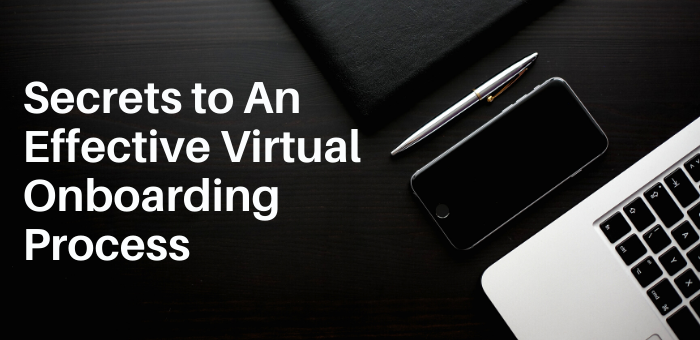
Secrets to An Effective Virtual Onboarding Process
- January 21, 2021
- Savannah Higgins
- General
- No Comments
Effective Virtual Onboarding: Charting the Course
I find myself fortunate as a recruiter to be in a profession that revolves entirely around people. I seek to understand what drives people, what they’re good at, what they see themselves doing five years from now, and even what they look for when it’s time to add a new member to their team. The best part is the excitement that builds when a candidate has accepted a new position and the start date is approaching.
While the start date may be the end of the formal recruiting process, it is just that – the start. It’s the start of what will hopefully be a successful, productive relationship for the candidate (now the “new hire”!) and the company. It is at this point that the onboarding process begins, which is a key window of opportunity for the company to make a great first impression and positively impact productivity, engagement, and employee retention. As with so many things, however, the current pandemic has created new and unique challenges for companies striving to deliver this experience. Many organizations are opting to onboard new employees virtually, which is uncharted territory for most.
Here are three themes to consider in building, or enhancing, your virtual onboarding process:
Purpose
In normal times, companies can often get away with a “figure it out as we go” approach because normal onboarding would likely involve informal introductions around the office, a team lunch, a building tour, that sort of thing. In a virtual process, you can’t just swing by the new hire’s desk. It’s critical to be purposeful in crafting the program. You want to make sure they have the tools they need to start learning right away, to gain context for how their role fits into the overall organization, and to contribute as quickly as possible.
- Partner with IT and logistics to make sure the new hire has the proper equipment – on time.
- Send an introductory email ahead of the new employee’s start date so they know what to expect.
- Add them to informal group chats and distribution lists, and to calendar invitations for team meetings or calls. Remind other leaders to do the same.
- Prepare a work plan so they have meaningful work to do and can quickly start feeling productive.
- Consider ways to incorporate the company brand into onboarding. For example, ship a swag bag ahead of the start date or reflect company colors or logo in virtual backgrounds.
Connect
Starting on day one, you want your new employee to feel welcome and to have the opportunity to meet and socialize with team members, their supervisor, and those they’ll work with across functions. They need plenty of opportunity to get familiar with people and to begin to build the collaborative relationships that will be needed to accomplish their tasks.
- Introduce the new hire to the team via a live and interactive video conference; if the team is very large, consider doing this in small groups.
- Assign a mentor or an onboarding buddy who can be a sounding board for questions.
- Schedule 1:1 live training sessions with the supervisor and other trainers to cover daily tasks. Spread out these training sessions so the employee has time to absorb the information.
- Create metrics and goals to provide opportunities for early wins and feeling of productivity, and to help the supervisor evaluate performance and recognize if the new hire feels overwhelmed.
- Film brief videos about your company culture, history, and vision, and about your benefits program and enrollment process, for use within the onboarding program. Don’t overwhelm them with videos though! Schedule videos in short bursts.
Feedback
It really isn’t possible to over-communicate in this environment. Open as many avenues for communication as possible and be responsive to questions and concerns. The company should actively seek feedback from new employees about the virtual onboarding experience and adapt the process in a timely fashion based on that feedback.
- Feedback is not simply evaluation of the new hire’s performance. Enable open communication in both directions for how things are going, what could be better, and where support is needed.
- Most steps in the onboarding process are not one-time efforts. Follow up and follow through is critical. Early on, the new hire should hear at least weekly from HR and IT to make sure processes are working properly and to resolve any issues.
- Supervisors should check in at least daily. Weave in opportunities for virtual coffee breaks with team members for questions and socializing. Make time for a virtual team lunch or happy hour to build relationships.
- Tap a senior leader to touch base periodically to see how they’re doing. This not only provides another perspective to the employee, but also offers a fresh perspective to the company about the employee’s onboarding experience.
There is little doubt that this pandemic has shaken up the typical onboarding processes for many, many companies. Even so, if this challenge is approached with a purposeful eye, it is possible to create a successful, employee-centric onboarding process that is delivered virtually. Approach their first days and weeks with your company from a welcoming and people-focused perspective to nurture that spark of excitement that comes with a new employee’s start date.
